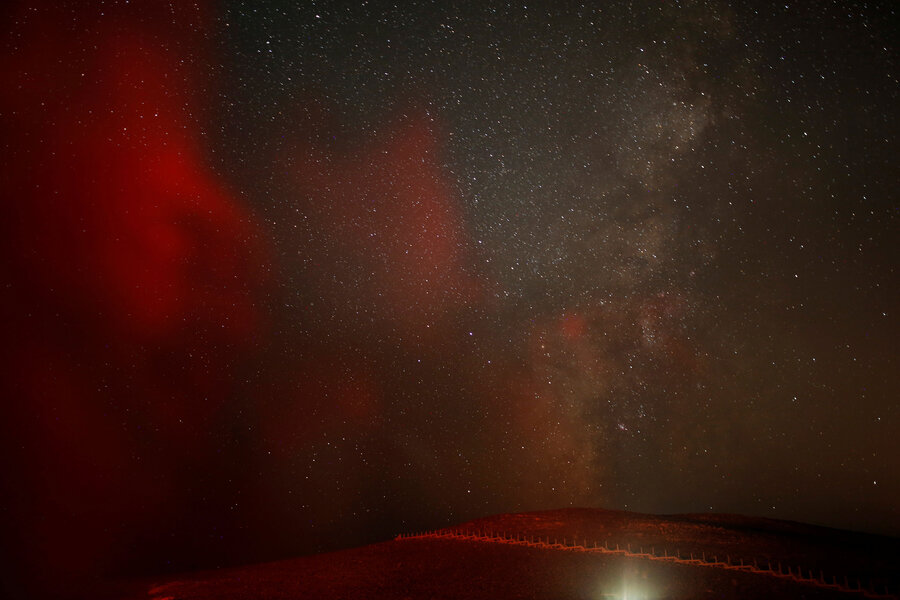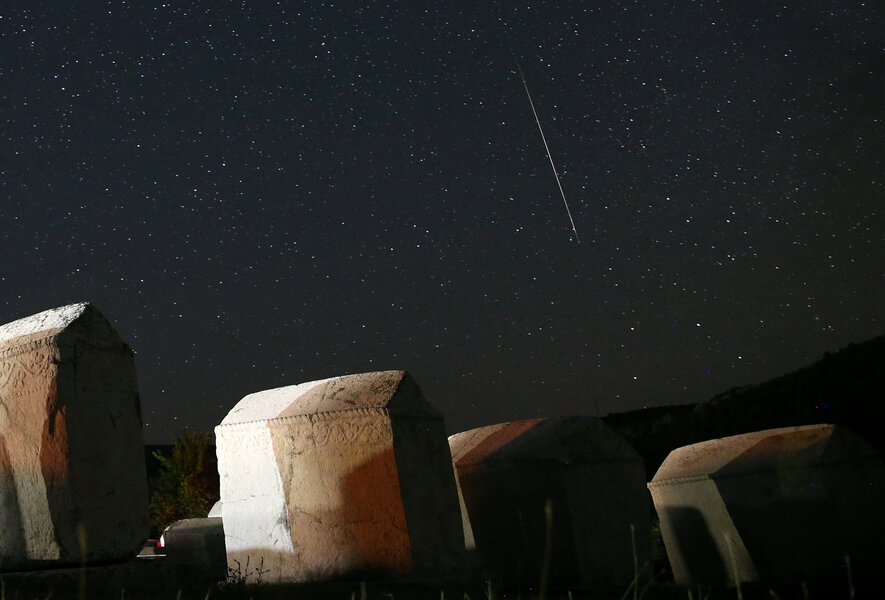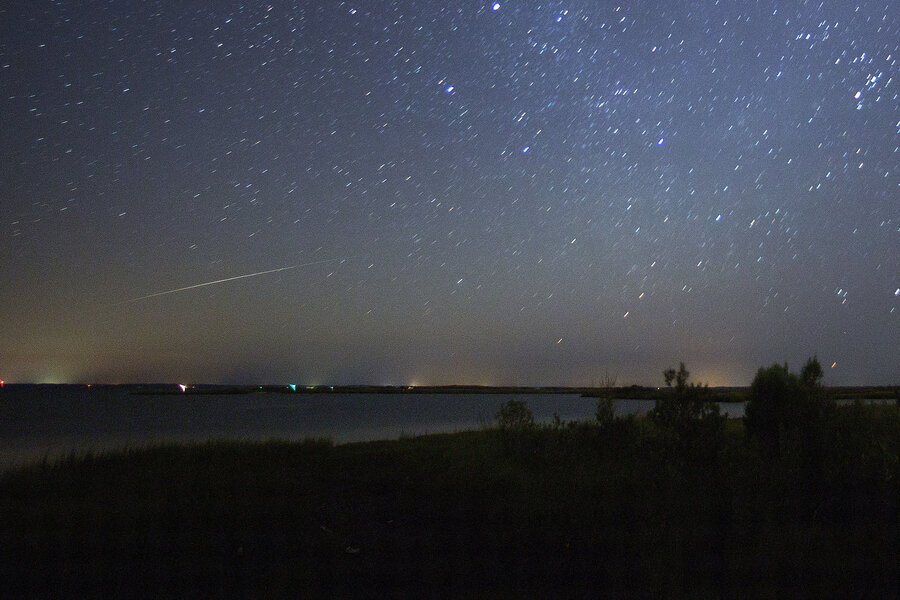Miss the spectacular Perseids meteor 'outburst'? We've got you covered.
Loading...
Bring something comfortable to sit on and some snacks, because you won’t want to miss the climax of nature’s dazzling light show in the night sky: the Perseid meteor shower.
Named after the constellation Perseus, which appears in the northeast and looks like a person in a cap with arms outstretched, the shower happens every year. But this year’s event could be one of the most spectacular, with double the rate of shooting stars as usual, says NASA meteor expert Bill Cooke.
"This year, instead of seeing about 80 Perseids per hour, the rate could top 150 and even approach 200 meteors per hour," Dr. Cooke said, according to Space.com.
In the transition between Friday night and Saturday morning – 12:56 a.m. Eastern time – just as the moon is setting, helping dim the night sky, astronomers predict that viewers may be able to see about one shooting star per minute.
In reality, the shooting stars are burning debris that’s flaking off a comet called Swift-Tuttle, which orbits the sun every 133 years. As it gets close to the sun, astronomer Phil Plait explains in Slate, the heat turns the ice in the comet into gas that forms the comet’s tail. At the same time, rocks flake off the comet and burn up in the Earth’s atmosphere. This makes for a flickering show of lights.
What makes this year special is that the orbit of the Perseids takes them close enough to Jupiter that its gravity pulls the cosmic debris closer, allowing Earth to pass through it at a point where the debris is most dense.
"This Perseid outburst coming up in August – you could think of it in simplistic terms as Jupiter's gravity causing the particles to concentrate in front of Earth's path," Cooke told Space.com. "That doesn't happen with all showers."
For the best viewing on Saturday morning, Dr. Plait suggests not using a telescope, which, he says is "like trying to watch fireworks through a soda straw." The idea is to see as much of the sky as possible – from as dark of a spot as possible – since meteors shoot through the sky from different spots.
And prepare to devote some time for the show. NASA points out that it may take up to 45 minutes for people’s eyes to adjust to the darkness and be able to spot the sometimes-dim streaks.
For those who want to capture the show on camera, Sky & Telescope has a guide to photographing shooting stars. And for people burdened with too much light pollution, cloudy skies, or sleepy eyes, NASA will live-stream the shower.
Though the meteor shower will last through late August, the peak is between August 11 and 13.









